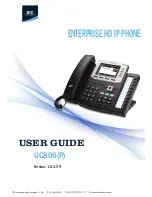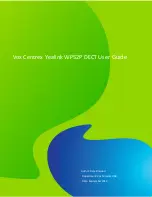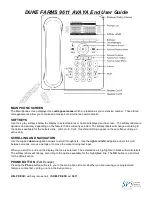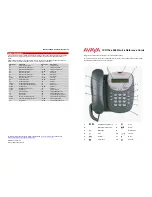
34
Lifeline 4000 Advanced User Guide (B)
Copyright © 2000 Tunstall Group Ltd.
Triggers
For a Lifeline 4000 the process of receiving a trigger and raising an alarm call is a three-stage
process, which can be characterized by three questions the unit asks:
1
Does the radio trigger I have just received belong to me (i.e. this Lifeline 4000)?
2
What sort of trigger is it—a personal trigger, a smoke alarm?
3
Now I know what sort of trigger it is, what action do I perform?
The external hardwired input and the red integral alarm button skip the first stage, but with this
exception the process is the same for all triggers. This process is summarized in the diagram on
the opposite page, and explained in more detail below.
Radio Triggers
Lifeline 4000 can accept radio inputs from Amie and GEM personal triggers, the Fall Detector
trigger, as well as the TalkBack speech trigger. For background information on how radio triggers
work with Lifeline 4000 please see the Lifeline 4000 User Guide.
Lifeline can also accept radio input from other devices. For example, alarm pull cords, smoke
detectors, temperature monitors and many other types of device can each be linked to a Tunstall
Radio Output Module to allow them to send radio signals to Lifeline. This can save on the cost and
inconvenience of installing wires.
What happens when you set off a radio trigger?
Each radio trigger has an identification number automatically entered into it when it is made at
the factory. When a radio trigger is set off it transmits this identification number. Lifeline listens
for any radio transmissions on a particular frequency. If it detects a signal it checks the number
that has been sent. Next, Lifeline looks through each of the parameters that hold radio trigger
identification numbers to see if there is a match between the number it has received and one of
the numbers in its memory. In other words, Lifeline asks the question,
Does the transmitted number
match the number of any of the radio triggers that belong to me?
Getting a hit and selecting an action
Let us imagine that Lifeline receives a radio transmission from a radio trigger. It works its way
through each parameter and finally finds a parameter with a value that matches the number it
heard being transmitted. Lifeline then moves to the next stage and asks the question,
What sort of
trigger is it?
It answers this question in one of two ways.
Method 1.
Some parameters are designated as particular trigger types. For example, if Lifeline
finds that the radio identification number it has received matches the number in parameter 24
then Lifeline will say, 24 is always a smoke trigger and so I will perform the smoke action.
Method 2.
For more flexibility, some radio triggers parameters are not designated as particular
types (these are called
Extension Radio Triggers
). For example, if Lifeline finds that the number it
has received from a radio trigger matches the number in parameter 62 it will say,
I have a match,
this is one of my triggers, now I need to find out what sort of trigger it is.
To do this it looks in the
next parameter (i.e. parameter 63). This will have the meaning of the radio trigger.
Summary of Contents for Lifeline 4000
Page 4: ...4 Lifeline 4000 Advanced User Guide B Copyright 2000 Tunstall Group Ltd...
Page 24: ...24 Lifeline 4000 Advanced User Guide B Copyright 2000 Tunstall Group Ltd...
Page 72: ...72 Lifeline 4000 Advanced User Guide B Copyright 2000 Tunstall Group Ltd...
Page 74: ...74 Lifeline 4000 Advanced User Guide B Copyright 2000 Tunstall Group Ltd...
Page 79: ...Copyright 2000 Tunstall Group Ltd Lifeline 4000 Advanced User Guide B 79...
















































